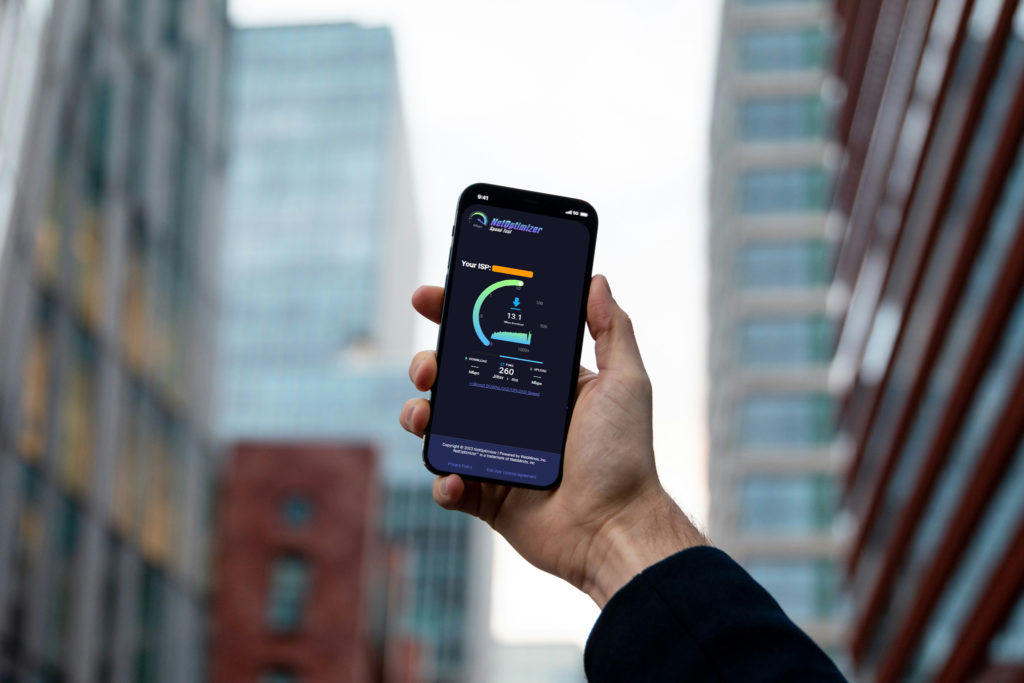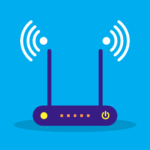
Are you frustrated with slow internet speeds on your Verizon connection? Don’t worry, you’re not alone. In today’s fast-paced world, a slow internet connection can be a major hindrance to productivity and enjoyment. Luckily, there are several steps you can take to improve your Verizon internet speed and enhance your online experience.
In this blog post, we will guide you through various techniques and tips to help you boost your Verizon internet speed. We will start by helping you understand your current internet speed and how to test it accurately. Next, we will discuss how to determine your internet needs and choose the right Verizon internet speed package for your requirements.
To begin improving your internet speed, we will explore basic tips such as restarting your router and modem, checking for and installing updates, and limiting the number of devices connected. We will also delve into the benefits of using Ethernet instead of Wi-Fi and how it can significantly enhance your internet speed.
Moving on, we will delve into optimizing your Wi-Fi for faster speeds. This includes positioning your router correctly, changing your Wi-Fi channel to avoid interference, and securing your Wi-Fi network to prevent unauthorized access.
For those seeking more advanced techniques, we will provide insights on upgrading your equipment, optimizing your browser settings, and trying a different DNS server to maximize your Verizon internet speed.
Additionally, we will discuss how to reach out to Verizon for support and troubleshoot any speed-related issues you may encounter. This will include tips on effectively discussing speed problems with Verizon, upgrading your Verizon internet plan, and knowing when it might be time to consider switching providers.
Don’t let slow internet speeds hinder your online activities any longer. With the help of this blog post, you’ll be equipped with the knowledge and tools necessary to improve your Verizon internet speed and enjoy a seamless online experience. Stay tuned for our upcoming posts as we dive deeper into each technique and provide step-by-step instructions on how to implement them.
Understanding Your Current Internet Speed
Understanding your current internet speed is the first step towards improving it. By knowing your current speed, you can accurately assess the improvements you need to make and track your progress. In this section, we will explore how to test your current internet speed, how to determine your internet needs, and the different Verizon internet speed packages available.
How to Test Your Current Internet Speed
To determine your current internet speed, you can perform an internet speed test. There are several reliable online tools available that can provide accurate measurements of your download and upload speeds. We recommend using NetOptimizer Speed Test, which is widely used and trusted.
To perform the test click the “Go” or “Start” button to initiate the speed test. The tool will measure your download and upload speeds, as well as other metrics such as latency and ping. Make sure to close any unnecessary applications or downloads running in the background to get the most accurate results.
How to Determine Your Internet Needs
Once you have tested your internet speed, it’s essential to determine your internet needs. Consider the number of devices connected to your network, the type of online activities you engage in, and the number of users simultaneously using your internet connection. This will help you assess if your current speed is sufficient for your requirements or if you need to upgrade.
For basic internet browsing, sending emails, and light streaming, a lower speed package may suffice. However, if you frequently engage in activities such as online gaming, video conferencing, or downloading large files, you may require a higher speed package to ensure a smooth experience.
Verizon Internet Speed Packages
Verizon offers a range of internet speed packages tailored to different needs. These packages vary in terms of download and upload speeds, pricing, and additional features. Some common Verizon internet speed packages include:
- Verizon Fios Internet 200/200: This package offers download and upload speeds of up to 200 Mbps, making it suitable for moderate internet usage.
- Verizon Fios Gigabit Connection: With download speeds of up to 940 Mbps and upload speeds of up to 880 Mbps, this package is ideal for heavy internet users, gamers, and households with multiple devices.
- Verizon 5G Home Internet: If you have access to Verizon’s 5G network, you can enjoy lightning-fast internet speeds. This package provides ultra-fast speeds for seamless streaming, gaming, and downloading.
It’s important to choose a package that aligns with your internet needs and budget. Consider the number of users, devices, and the activities you engage in to make an informed decision.
Understanding your current internet speed and determining your internet needs are crucial steps towards improving your Verizon internet speed. Once you have a clear understanding of these aspects, you can move on to implementing techniques and tips to enhance your internet speed. In the next section, we will discuss basic tips that can make a significant difference in improving your Verizon internet speed.
Improving Verizon Internet Speed: Basic Tips
Improving your Verizon internet speed doesn’t always require complex solutions. In this section, we will explore some basic tips that can make a significant difference in enhancing your internet speed. These tips include restarting your router and modem, checking for and installing updates, limiting the number of devices connected, and using Ethernet instead of Wi-Fi.
Restart Your Router and Modem
One of the simplest and most effective ways to improve your internet speed is to restart your router and modem. Over time, these devices can experience performance issues and a simple restart can often resolve them. To restart your router and modem, follow these steps:
- Locate your router and modem. They are usually separate devices, with the modem connecting to your internet service provider’s network and the router distributing the internet connection to your devices.
- Power off both the router and modem by unplugging them from the power source.
- Wait for about 30 seconds to ensure that all residual power is drained from the devices.
- Plug in the modem first and wait for it to fully boot up. This process may take a few minutes, so be patient.
- Once the modem is fully operational, plug in the router and wait for it to boot up as well.
- Connect your devices to the network and test your internet speed to see if there is an improvement.
Check for and Install Updates
Outdated firmware and software can impact your internet speed. It’s essential to regularly check for updates for your router and modem and install them as needed. Manufacturers often release firmware updates to address performance issues and enhance compatibility with various devices. To check for updates, follow these steps:
- Access your router’s administration panel by typing its IP address into a web browser. The IP address is typically printed on the router itself or mentioned in the user manual.
- Once logged in, navigate to the firmware or software update section. This may differ slightly depending on your router’s manufacturer and model.
- Check for any available updates and follow the instructions provided to install them. It’s crucial to ensure a stable internet connection during the update process.
Regularly updating your router and modem can help improve their performance, resulting in better internet speeds.
Limit the Number of Devices Connected
Having multiple devices connected to your network simultaneously can significantly impact your internet speed. Each device consumes a portion of the available bandwidth, leading to slower speeds for all devices. Consider limiting the number of devices connected, especially during activities that require high bandwidth, such as streaming or online gaming.
You can limit the number of devices connected by:
- Disconnecting devices that are not in use.
- Prioritizing essential devices and temporarily disconnecting less crucial ones.
- Utilizing your router’s parental control or device management features to limit access for certain devices during specific times.
By reducing the number of devices connected, you can allocate more bandwidth to the devices you are actively using, resulting in improved internet speeds.
Use Ethernet Instead of Wi-Fi
While Wi-Fi provides convenient wireless connectivity, it may not always offer the same speed and stability as a wired Ethernet connection. If you have the option, consider connecting your device directly to the router using an Ethernet cable. This eliminates potential interference and signal loss associated with Wi-Fi, resulting in faster and more reliable internet speeds.
To connect your device via Ethernet:
- Locate an Ethernet cable and connect one end to the Ethernet port on your device (e.g., laptop or desktop computer).
- Connect the other end of the Ethernet cable to one of the available LAN ports on your router.
- Your device should automatically detect the Ethernet connection, and you should experience improved internet speeds.
Using Ethernet can be particularly beneficial for activities that require a stable and fast connection, such as online gaming or downloading large files.
By implementing these basic tips, you can make a noticeable difference in your Verizon internet speed. However, if you’re looking for further optimizations, such as improving your Wi-Fi signal or exploring advanced techniques, stay tuned for the next sections of this blog post.
Optimizing Your Wi-Fi for Faster Speeds
Optimizing your Wi-Fi connection is crucial for achieving faster internet speeds, especially if you primarily rely on wireless connectivity. In this section, we will explore various techniques to optimize your Wi-Fi and enhance your Verizon internet speed. We will discuss how to position your router correctly, change your Wi-Fi channel, and secure your Wi-Fi network.
Position Your Router Correctly
The placement of your router plays a significant role in the strength and range of your Wi-Fi signal. To optimize your Wi-Fi connection, consider the following tips for positioning your router:
- Central Location: Place your router in a central location within your home or office. This helps distribute the Wi-Fi signal evenly throughout the space.
- Elevated Position: Position your router on a higher shelf or mount it on the wall. This helps reduce signal obstruction and interference from furniture, walls, and other objects.
- Avoid Obstructions: Keep your router away from large obstacles, such as metal objects, thick walls, and appliances that can interfere with the Wi-Fi signal.
- Distance from Interference Sources: Keep your router away from devices that emit electromagnetic interference, such as cordless phones, microwaves, or baby monitors.
By positioning your router correctly, you can improve the coverage and strength of your Wi-Fi signal, resulting in faster and more reliable internet speeds.
Change Your Wi-Fi Channel
Wi-Fi routers operate on different channels within the wireless spectrum. If multiple nearby Wi-Fi networks are using the same or overlapping channels, it can lead to interference and slower internet speeds. Changing your Wi-Fi channel can help alleviate this issue. Here’s how to do it:
- Access your router’s administration panel by typing its IP address into a web browser.
- Log in using your router’s username and password. Refer to the router’s manual or the manufacturer’s website if you’re unsure of the credentials.
- Navigate to the wireless settings or Wi-Fi settings section.
- Look for the channel selection option and change it to a different channel. You can experiment with different channels to find the one that offers the best performance.
- Save the changes and allow the router to restart.
By choosing a less congested Wi-Fi channel, you can reduce interference and improve your internet speed.
Secure Your Wi-Fi Network
Securing your Wi-Fi network not only protects your personal information but also ensures that unauthorized users are not draining your bandwidth, leading to slower internet speeds. Here are some essential steps to secure your Wi-Fi network:
- Change the Default Administrator Password: Update the default password for accessing your router’s administration panel. Choose a strong, unique password to prevent unauthorized access.
- Enable Encryption: Enable Wi-Fi encryption, preferably using WPA2 (Wi-Fi Protected Access 2) or WPA3. Encryption ensures that data transmitted over your network is secure.
- Set a Strong Network Password: Create a strong password for your Wi-Fi network. Avoid using common or easily guessable passwords. A strong password includes a combination of uppercase and lowercase letters, numbers, and special characters.
- Disable SSID Broadcasting: Disable the broadcasting of your Wi-Fi network’s SSID (Service Set Identifier). This makes your network less visible to potential attackers.
By securing your Wi-Fi network, you can prevent unauthorized access and ensure that your internet speed is utilized only by your devices.
Optimizing your Wi-Fi connection is a crucial step in improving your Verizon internet speed. By positioning your router correctly, changing your Wi-Fi channel, and securing your network, you can enjoy faster and more reliable wireless internet speeds. In the next section, we will explore advanced techniques for increasing your Verizon internet speed, including upgrading your equipment and optimizing your browser settings.
Advanced Techniques for Increasing Verizon Internet Speed
If you’re looking to take your Verizon internet speed to the next level, advanced techniques can provide significant improvements. In this section, we will explore advanced techniques that go beyond the basic tips we discussed earlier. These techniques include upgrading your equipment, optimizing your browser settings, and trying a different DNS server.
Upgrade Your Equipment
Sometimes, outdated or underperforming equipment can be a bottleneck for your internet speed. Upgrading your equipment can help unlock faster speeds and better performance. Consider the following upgrades:
- Router: If you’ve had your router for a while, it may be worth upgrading to a newer model that supports the latest Wi-Fi standards. Look for routers that offer faster speeds, wider coverage, and better signal stability.
- Modem: If you’re using an older modem, upgrading to a newer model can potentially improve your internet speed. Ensure that the modem is compatible with your internet plan and supports the desired speeds.
- Network Interface Card (NIC): If you’re using a desktop computer, consider upgrading your NIC to take advantage of faster connection speeds. Look for NICs that support Gigabit Ethernet for improved performance.
By upgrading your equipment, you can harness the full potential of your Verizon internet connection and experience faster speeds.
Optimize Your Browser Settings
Your web browser settings can also impact your internet speed. By optimizing these settings, you can enhance your browsing experience and potentially increase your internet speed. Here are some optimizations you can try:
- Clear Browser Cache: Over time, your browser cache can become filled with temporary files, which can slow down your browsing speed. Regularly clear your browser cache to remove unnecessary files and improve performance.
- Disable or Remove Browser Extensions: Some browser extensions can affect your internet speed by consuming resources or interfering with web content. Disable or remove any unnecessary or problematic extensions to streamline your browsing experience.
- Enable Browser Data Compression: Some browsers offer data compression features that can reduce the amount of data transmitted, resulting in faster page loading times. Enable this feature in your browser settings if available.
- Update Your Browser: Ensure that your web browser is up to date with the latest version. Browser updates often include performance improvements and bug fixes that can enhance your internet speed.
By optimizing your browser settings, you can improve the efficiency of your web browsing and potentially experience faster loading times.
Try a Different DNS Server
The DNS (Domain Name System) server translates website URLs into IP addresses, allowing your device to connect to the correct website. Using a different DNS server can sometimes improve your internet speed. Consider trying alternative DNS servers, such as:
- Google Public DNS
- OpenDNS
- Cloudflare DNS
To change your DNS server, follow these steps below or download NetOptimizer:
- Access your router’s administration panel.
- Navigate to the DNS settings section.
- Enter the IP addresses of the alternative DNS servers you want to use. You may need to consult the documentation or support resources for your specific router model to find the appropriate settings.
- Save the changes and allow the router to restart.
By using a different DNS server, you may experience faster website resolution and improved internet speed.
Implementing these advanced techniques can help you maximize your Verizon internet speed. By upgrading your equipment, optimizing your browser settings, and trying a different DNS server, you can unlock faster speeds and enjoy a smoother online experience.
Contacting Verizon for Support
If you’ve followed all the previous techniques and tips but are still experiencing issues with your Verizon internet speed, it may be time to reach out to Verizon for support. In this final section, we will discuss how to effectively communicate speed problems with Verizon, options for upgrading your Verizon internet plan, and when to consider switching providers.
Discussing Speed Problems with Verizon
When contacting Verizon regarding speed problems, it’s important to provide accurate and detailed information to help them diagnose and address the issue. Here are some steps to follow when discussing speed problems with Verizon:
- Perform Speed Tests: Before contacting Verizon, conduct multiple speed tests using reliable tools like NetOptimizer Speed Test. Note down the results, including the date and time of each test.
- Document Specific Issues: Make a list of specific issues you’re experiencing, such as slow download speeds, frequent disconnections, or inconsistent performance. Note when these issues occur and if they are affecting specific devices or times of day.
- Contact Verizon Support: Reach out to Verizon’s customer support via their designated support channels, such as phone, online chat, or email. Explain your speed problems, provide the details you documented, and be ready to follow any troubleshooting steps they may suggest.
- Escalate If Necessary: If the initial support representative is unable to resolve your speed problems, politely ask to escalate your case to a higher level of support. This may involve speaking with a supervisor or technical specialist who can provide further assistance.
By effectively communicating your speed problems to Verizon, you increase the chances of finding a resolution to improve your internet speed.
Upgrading Your Verizon Internet Plan
If you consistently require faster internet speeds due to increased usage or specific activities, upgrading your Verizon internet plan may be a viable option. Here are some steps to consider when upgrading your plan:
- Evaluate Your Needs: Assess your internet usage patterns, including the number of devices connected, the type of activities you engage in, and the desired internet speeds for optimal performance.
- Research Available Plans: Visit the Verizon website or contact their sales team to explore the available internet plans. Consider the download and upload speeds, pricing, and any additional features or benefits offered.
- Compare Packages: Compare the features and pricing of different plans to find the one that aligns with your needs and budget. Pay attention to any promotional offers or discounts that may be available.
- Contact Verizon Sales: Reach out to Verizon’s sales team to discuss your desired plan upgrade. They can provide further information, answer your questions, and guide you through the upgrade process.
By upgrading your Verizon internet plan, you can access faster speeds that better suit your internet usage requirements.
When to Consider Switching Providers
In some cases, despite troubleshooting and upgrading efforts, you may find that your Verizon internet speed is consistently unsatisfactory. In such situations, it may be worth considering switching to a different internet service provider. Here are some factors to consider when evaluating a switch:
- Availability of Alternatives: Research and identify alternative internet service providers in your area. Check if they offer faster speeds, better performance, or more reliable connections.
- Customer Reviews and Ratings: Read customer reviews and ratings of other internet service providers to gauge their overall performance and customer satisfaction levels.
- Cost and Contract Considerations: Compare the pricing, contract terms, and any additional fees associated with switching to a different provider. Ensure that the overall cost and terms are favorable before making a decision.
- Consultation with Current Provider: Before switching, contact Verizon to discuss your concerns and see if they can offer any solutions or incentives to improve your internet speed.
Ultimately, the decision to switch providers should be based on careful evaluation of available options and your specific needs.
By effectively communicating with Verizon, exploring plan upgrades, and considering alternative providers when necessary, you can find the best solution to address your internet speed concerns.
Congratulations! You have now gained a comprehensive understanding of how to improve your Verizon internet speed. By following the tips and techniques discussed throughout this blog post, you can optimize your connection and enjoy faster and more reliable internet speeds. Remember, each situation may be unique, so feel free to adapt the strategies to your specific needs. Enjoy your enhanced online experience!





